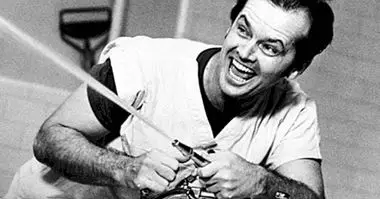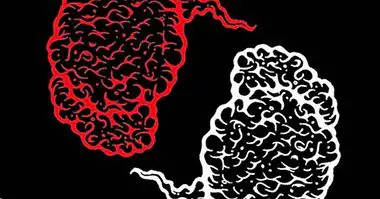The Dual Grieving Process Model: an alternative approach
The elaboration of mourning before a certain loss becomes a very complex event for the individual, from the emotional, cognitive and behavioral point of view.
It seems obvious the differentiation on the difficulty involved in this process taking into account the external circumstances surrounding such loss, such as the particularities in which it took place (whether it was abrupt or gradual), the type of link between the object of mourning and the surviving person or the skills that such an individual has to manage this type of situation, etc.
In this article we will focus on the Dual Duel Process Model and its implications.
- Related article: "The duel: facing the loss of a loved one"
The first approaches: the stages in the elaboration of the duel
More traditionally, on the one hand, there has been a certain consensus among various expert authors in the area of a set of stages through which people must go through the psychological elaboration of the grieving process. Even so, it is also accepted as considerably validated the idea that not all individuals follow the same pattern in the experience of these phases .
For example, the well-known Model of Elisabeth Kübler-Ross (1969) assumes the following five stages: denial, anger, negotiation, depression and acceptance; whereas Robert A. Neimeyer (2000) refers to the "cycle of mourning" as a highly variable and particular process where permanent life adjustments occur during avoidance (absence of awareness of loss), assimilation (assuming loss with predominance of feelings of sadness and loneliness and isolation from the social environment) and accommodation (adaptation to the new situation in the absence of the object of mourning).
Despite such discrepancies in the number of stages or the conceptual label given to them, it seems like a nuclear phenomenon to understand mourning as a transition period that goes from non-acceptance to assimilation , where feelings of sadness, longing, anger, apathy, loneliness, guilt, etc., are conjugated. with a progressive return to obligations, responsibilities and personal life projects.
At first it presents a greater weight the first set of emotional reactions , but little by little the second element related to behavioral activation is taking more relevance, until reaching equilibrium with respect to those. This allows the person to evaluate this loss from a more global perspective, since the fact of resuming the routine enables the person to connect more realistically with the world around him and to move his focus of attention somewhat away, moving it from the object of the loss until the vital re-adaptation of the different personal areas.
The model of the dual process of mourning
This idea is defended by Margaret Stroebe in its Model of "Dual Process of the Duel" (1999), where the researcher explains that the assumption of the duel implies the person to move continuously between the grounds of a "operation oriented to the loss" and a "operation oriented to the reconstruction ".
The operation oriented to the loss
In this first process, the person focuses his or her emotional burden on experimenting, exploring and expressing in different ways (verbally or behaviorally) in order to understand the meaning that loss entails in their own lives.
A) Yes, the survivor is in a period of introspection , which could be understood metaphorically as a process of "behavioral energy saving" in order to consolidate this primary objective. The most characteristic manifestations in this first cycle include: being in contact with the loss, concentrating on their own pain, crying, talking about it, maintaining a passive behavior, presenting feelings of depression, isolation, having the need to emotionally download, promote the memory or, finally, deny the possibility of recovery.
The operation oriented to the reconstruction
In this stage small episodes appear in the individual of a "operation oriented to the reconstruction", which increase in frequency and duration with the passage of time. Thus, it is observed in the person as It invests its effort and its concentration in the adjustments it has to make in the different vital areas : family, work, social. This presents the purpose of being able to channel outward the affectation experienced in the most acute stage of grief.
This operation is based on actions such as: disconnect from the loss, tend to the denial of the situation, distract, minimize the affectation, rationalize the experience, avoid the crying or the fact of talking about the loss, focus on redirecting the vital areas,adopt a more active attitude or focus on fostering interpersonal relationships.
The denial of loss as a central element of the model
In this model, it is proposed, as can be observed in the previous paragraph, that the denial of the loss takes place during the entire process of elaboration of the duel, being present in both types of operation, and not being found exclusively in the initial phases, as suggested by other more traditional theoretical models.
This denial, it is understood as an adaptive response that allows the individual not to constantly focus on the reality of the loss, but rather to get used to it in a more gradual way. This gradation avoids the experience of a pain that is too intense (and unacceptable) that would imply confronting the assumption of the loss from the beginning and abruptly.
Among many others, some experts such as Shear et al. (2005) have designed a program of psychological intervention according to the postulates of Stroebe. These studies have focused on working with patients on the indicated component of anxious denial (or loss-oriented functioning) and depressive denial (or performance-oriented reconstruction) of loss. The central elements of this type of therapy have included components of gradual and personalized behavioral exposure and cognitive restructuring .
Shear and his team obtained very promising results in terms of the effectiveness of the interventions carried out, while at the same time they had a sufficient level of scientific rigor when designing and controlling the different experimental situations. In summary, it seems to have been observed that cognitive-behavioral approaches provide an adequate level of efficacy in this type of patients.
- Perhaps you are interested: "Behavioral Cognitive Therapy: what is it and on what principles is it based?"
conclusion
The model presented in this text aims to offer a conceptualization of grief focused on the process and aims to move away from a more "phased" perspective as advocated earlier proposals. Yes, it seems contrasted the low level of uniformity in the experience of personal grief, assuming the particularity with which this phenomenon operates in each individual.
This is explained by differences in coping skills and psychological or emotional resources available to each individual. Thus, although the general effectiveness of psychological interventions linked to this objective has been growing in the last decades, they still have a limited and improved effectiveness index, which should be linked to the continuation of research in this area of knowledge.
Bibliographic references:
- Neimeyer, R. A., & Ramírez, Y. G. (2007). Learning from loss: a guide to face grief. Paidós.
- Shear, K., Frank, E., Houck, P., & Reynolds, C. (2005). Treatment of complicated grief: A randomized controlled trial. JAMA, 293.2601-2608.
- Stroebe M., Schut H. & Boerner K. (2017) Behavioral coping models: an updated summary. Psychology studies, 38: 3, 582-607.
- Stroebe, M. S., & Schut, H. A. W. (1999). The dual process of coping with bereavement: Rationale and description. Death Studies, 23,197-224.



















